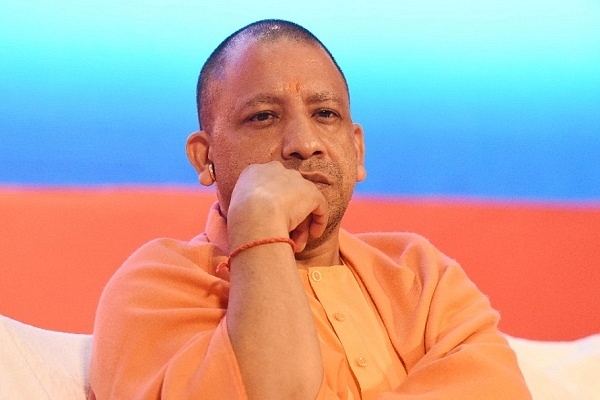Infrastructure
UP’s Latest Budget Is Focussed On Infrastructure And That’s A Great Sign

Uttar Pradesh Chief Minister Yogi Adityanath (Subhankar Chakraborty/Hindustan Times via Getty Images)
With provisions worth Rs 10,967.87 crore for new schemes, Yogi Adityanath’s fourth budget lays heavy thrust on creation of public assets across sectors and building adequate infrastructure capacity to facilitate utilisation of these assets.
With multiple announcements made with respect to expressways, roads and airports, it is clear that Uttar Pradesh espouses to converge the gap between quality of life in rural and urban areas.
Air Connectivity: The Budget provided for Rs 2,592.5 crore for airports. Two new airports were announced. One, Noida International Greenfield Airport at Jewar in Gautam Buddh Nagar has been budgeted at Rs 2,000 crore. Until now, Noida has been relying on the Delhi International Airport, which is at least 30 km away. With Noida emerging as an IT hub and home to Noida Film City, the new announcement will certainly prove to be an economically viable intervention.
The second airport, which has been allocated Rs 500 crore, will be set up at Ayodhya. Ayodhya has seen a remarkable facelift and witnessed increased footfalls since Yogi Adityanath assumed office.
The annual Diwali celebrations has put the dusty town back on India’s tourist map. Currently, Ayodhya is 150 km away from the Lucknow Airport and takes at least 2.5 hours for a devotee to reach Janmabhoomi after deboarding the flight.
Direct connectivity to Ayodhya will have three immediate economic consequences: employment creation in the hospitality sector, growth in consumption at the local market level, and reduced migration of both skilled and unskilled population.
Expressways: Budget 2020-21 was able to announce Rs 2,000 crore for Ganga Expressway Project, that has been stalled since 2007. With a network that connects major trade hubs of the State i.e. Varanasi, Mirzapur, Allahabad, Pratapgarh, Rae Bareli, Unnao, Kanpur, Kannauj, Farrukhabad, Shahjahanpur, Badaun, Bulandshahr, the project will be spread over two phases; Phase 1, which will connect Meerut to Prayagraj will extend up to 637 km, and Phase 2 which will connect the expressway to Balia in West and Uttarakhand boundary in the East.
Moreover, the Balia Expressway to connect Balia with Gorakhpur Link Expressway has also been announced. Since Balia is the easternmost city of the State, it is all the more important to connect it with all the major economic centres of the State.
Metro Rail: With a vision to achieve a USD 1 trillion economy for the State, one of the early requirements is to have self-sufficient cities. Increase in economic activity demands investment and cities with the best infrastructure and commute facilities are inevitable for the same. Rs 844 crore has been announced for metros in Kanpur, Gorapkhpur, and Agra and Rs 900 crore has been provided for a Regional Rapid Transit System from Delhi to Meerut.
With proximity to Delhi and known for being the “Sports City of India”, Meerut is economically crucial for the manufacturing industry in the State.
Roads: Budget 2020-21 provides Rs 14,380 crore for roads under public works, excluding rural areas. Announcements to address accident-prone areas, acquisition of land for construction of roads in seven districts on Nepal border and creating fresh bypasses and ring roads have been made.
The Budget has provisioned more than 2,500 crore for new bridges and incorporates two projects that will be undertaken in collaboration with the World Bank (Rs 830 crore) and Asian Development Bank (Rs 755 crore).
As a Budget that envisions the landscape of a developed, self-sufficient and prosperous Uttar Pradesh, it will be important to see Lucknow, Kanpur, Varanasi, Prayagraj, Meerut, Mathura develop as cities that attract talent from other parts of the country.
The State will also have to accomplish its milestones related to industrial corridors and rural infrastructure to reduce migration by leveraging on availability of labour than losing its talent pool to other parts of the country.
(This piece was first published on India InfraHub, and has been published here with permission)
Support Swarajya's 50 Ground Reports Project & Sponsor A Story
Every general election Swarajya does a 50 ground reports project.
Aimed only at serious readers and those who appreciate the nuances of political undercurrents, the project provides a sense of India's electoral landscape. As you know, these reports are produced after considerable investment of travel, time and effort on the ground.
This time too we've kicked off the project in style and have covered over 30 constituencies already. If you're someone who appreciates such work and have enjoyed our coverage please consider sponsoring a ground report for just Rs 2999 to Rs 19,999 - it goes a long way in helping us produce more quality reportage.
You can also back this project by becoming a subscriber for as little as Rs 999 - so do click on this links and choose a plan that suits you and back us.
Click below to contribute.
Latest